Today’s Current Affairs: 25th July 2024 for UPSC IAS exams, State PSC exams, SSC CGL, State SSC, RRB, Railways, Banking Exam & IBPS, etc
Table of Contents
Angel Tax : Union Budget 2024-2025
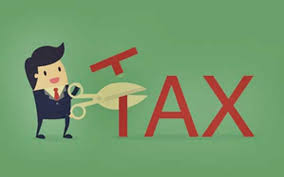
The Union Minister for Finance proposed to abolish ‘angel tax’ for all classes of investors, while presenting the Union Budget 2024-25 in Parliament.
- Angel Tax was levied on the capital raised via the issue of shares by unlisted companiesfrom an Indian investor if the share price of issued shares is seen in excess of the fair market value of the company.
- The excess funds raised at prices above fair value are treated as income, on which tax is levied.
- It derives its genesis from section 56(2) (viib) of the Income Tax Act, 1961.
- It was first time introduced in 2012to prevent black money laundering through share sales.
- It was levied at a rate of 30.9% on net investments in excess of the fair market value.
- In 2019, the Government announced an exemption from the Angel Tax for startups on fulfillment of certain conditions. These are:
- The startup should be recognized by the Department for Promotion of Industry and Internal Trade (DPIIT) as an eligible startup.
- The aggregate amount of paid-up share capital and share premium of the Startup cannot be more than ₹25 crores. This amount does not include the money raised from Non-Resident Indians (NRIs), Venture Capital Firms, and specified companies.
- For angel investors, the amount of investment that exceeds the fair market value can be claimed for a 100% tax exemption.
- However, the investor must have a net worth of ₹2 crores or an income of more than ₹25 Lakh in the past 3 fiscal years.
Clarion-Clipperton Zone:
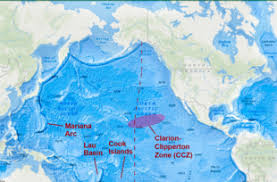
India will apply for licences from International Seabed Authority (ISA) to explore for deep-sea minerals in the Pacific Ocean especially plans to focus on the Clarion-Clipperton Zone.
- Clarion-Clipperton Zone (CCZ) is a vast plain in the North Pacific Ocean between Hawaii and Mexico.
- It is known to hold large volumes of polymetallic nodules containing minerals used in electric vehicles and solar panels including manganese, nickel, copper, and cobalt.
- First discovered by British sailors in 1873, the potato-shaped nodules take millions of years to form.
- Up to 30 cetacean populations, including globally endangered species like blue whales, can be found in the CCZ, where 17 exploratory deep-sea mining licenses have been granted.
International Seabed Authority (ISA):
- It is an international organization established in 1994 to regulate mining and related activities in the international seabedbeyond national jurisdiction, an area that includes most of the world’s oceans.
- It came into existence upon the entry into force of the 1982 United Nations Convention on the Law of the Sea (UNCLOS), which codified international law regarding territorial waters, sea lanes and ocean resources.
- It has 169 Members, including 168 Member States and the European Union.
- It is responsible for granting licenses and regulating activitiesrelated to the exploration and exploitation of mineral resources in the international seabed.
- It ensures that these activities are carried out in a manner that protects the marine environment and promotes the equitable and efficient utilization of resources.
- Headquarters: Kingston, Jamaica
Climate Finance Taxonomy:

Presenting the Union Budget for 2024-25, the Finance Minister announced that the government would develop a ‘climate finance taxonomy’.
- Climate Finance Taxonomy is a system that classifies which parts of the economy may be marketed as sustainable investments.
- It helps guide investors and banks in directing trillions toward impactful investments to tackle climate change.
- Taxonomies are frequently used to set standards for classifying climate-related financial instruments (e.g., green bonds), but, increasingly, they serve other use cases where the benchmarking feature is viewed as beneficial, including in the areas of climate risk management, net-zero transition planning and climate disclosure.
- South Africa, Colombia, South Korea, Thailand, Singapore, Canada and Mexico are some of the countries which have developed taxonomies. The European Union has done this as well.
- With global temperatures soaring and the adverse effects of climate change exacerbating, countries need to transition to a net-zero economy: the balance between the amount of greenhouse gas (GHG) that is produced and the amount that is removed from the atmosphere.
- It can play a pivotal role in doing this as they can help ascertain if economic activities are aligned with credible, science-based transition pathways.
- They can also give impetus to deployment of climate capital, and reduce the risks of greenwashing.
- It will enhance the availability of capital for climate adaptation and mitigation. This will help India achieve its climate commitments and green transition.
Electric Mobility Promotion Scheme:

The central government said that the Electric Mobility Promotion Scheme (EMPS) 2024 will provide further impetus to the green mobility and development of electric vehicle (EV) manufacturing ecosystem in the country.
- Electric Mobility Promotion Scheme aims to further accelerate the adoption of Electric Vehicles in the country.
- It is a fund limited scheme with a total outlay of Rs. 500 crore for the period of 4 months.
- It is for faster adoption of electric two-wheeler (e-2W) and three-wheeler (e-3W)to provide further impetus to the green mobility and development of electric vehicle (EV) manufacturing ecosystem in the country.
- The Scheme duration is 4 months i.e. April 01, 2024 till July 31, 2024.
- Eligible Electric Vehicle categories
- Two Wheelers (electric) (e-2W)
- Three-wheeler (electric) including registered e-rickshaws & e-carts and L5 (e-3W)
- The scheme will be applicable mainly to those e-2W and e-3Ws registered for commercial purposes. Further, in addition to commercial use, privately or corporate owned registered e-2W will also be eligible under the scheme.
- To encourage advanced technologies, the benefits of incentives will be extended to only those vehicles which are fitted with advanced batteries.
- The EVs eligible for incentivisation under EMPS 2024 scheme must be manufactured and registered within the validity period of EMPS -2024 certificate.
Vishnupad Temple And Mahabodhi Temple

Finance Minister announced during her Union Budget speech that corridor projects will be built for the Vishnupad Temple at Gaya and the Mahabodhi Temple at Bodh Gaya in Bihar.
- Vishnupad Temple is in the state of Bihar and dedicated to Lord Vishu.
- It was built in 1787 on the orders of Queen Ahilyabai Holkar of Ahmadnagar.
- It is located on the banks of the Falgu river.
- Architecturally, the temple is around 100 feet tall and has 44 pillars.
- Devotees visit the temple during pitra paksh, a period in the Hindu calendar when people take part in rituals to remember their ancestors.
Mahabodhi Temple::
- The temple stands to the east of the Mahabodhi Tree, where Gautam Buddha is believed to have attained nirvana. The temple has a unique shape and a height of 170 feet.
- It is located in Bodh Gaya, in central Bihar, on the banks of the Niranjana River.
- The Mahabodhi Temple Complex is the first temple built by Emperor Asoka in the 3rd century B.C., and the present temple dates from the 5th–6th centuries.
- It is one of the earliest Buddhist temples built entirely in brick, still standing, from the late Gupta period and it is considered to have had significant influence in the development of brick architecture over the centuries.
- It was recognized as a UNESCO World Heritage Site in 2002.
INS Brahmaputra:
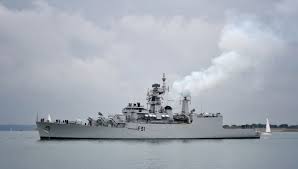
The Indian Navy’s INS Brahmaputra warship, docked at Mumbai Dockyard for refitting, overturned under mysterious circumstances after a fire broke out, leading to significant damage, and one sailor reported missing.
- INS Brahmaputra is the first of the indigenously built ‘Brahmaputra’ class-guided missile frigates.
- The Brahmaputra class, which replaces the Talwar class, is an indigenous upgrade on the Godavari class of frigates.
- The class’s next two ships, INS Betwa and INS Beas, were similarly given river names; INS Brahmaputra is the class lead ship.
- It was built by state-run Garden Reach Shipbuilders and Engineers Limited (GRSE).
- It was commissioned into the Indian Navy in April 2000.
- The ship is fitted with medium-range, close-range and anti-aircraft guns, surface-to-surface and surface-to-air missiles, and torpedo launchers.
- The ship has a wide array of sensors covering all facets of maritime warfare and is capable of operating Seaking and Chetak helicopters.
Skill Loan Scheme:

The Union Finance Minister recently announced a revision to the model skill loan scheme, which will now facilitate loans up to Rs 7.5 lakh backed by a guarantee from a government-promoted fund.
- Skill Loan Scheme was introduced in July, 2015, to offer institutional credit to individuals pursuing skill development courses aligned with National Occupations Standards and Qualification Packs.
- These courses are conducted by training institutes following the National Skill Qualification Framework (NSQF) and lead to certifications, diplomas, or degrees.
- The Scheme applies to all member banks of the Indian Banks’ Association (IBA) and other banks and financial institutions as advised by the Reserve Bank of India (RBI).
- Any Indian National who has secured admission in a course run by Industrial Training Institutes (ITIs), Polytechnics, or in a school recognised by Central or State Education Boards or in a college affiliated with a recognised university, training partners affiliated to National Skill Development Corporation (NSDC) Sector Skill Councils, State Skill Mission, or State Skill Corporation can avail loan for the purpose.
- No specific restriction with regard to age.
- Courses: Aligned with NSQF.
- The scheme does not allow for collateral to be charged from the beneficiary.
- Ministry of Skill Development and Entrepreneurship (MSDE), through a November 2015 notification, brought into force the Credit Guarantee Fund for Skill Development (CGFSSD) for all skill loans sanctioned on or after 15 July 2015, to be administered by the National Credit Guarantee Trust Company (NCGTC).
- Banks can apply to the NCGTC for a credit guarantee against defaults, and the NCGTC will provide this guarantee at a nominal fee which shall not exceed 0.5% of the amount outstanding.
- The guarantee cover will be for a maximum of 75% of the outstanding loan amount (including interest, if any).
Tax Incidence:
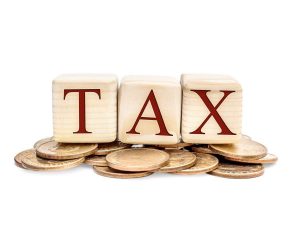
The Union government recently said Goods and Services Tax (GST) has decreased tax incidence on the common man.
- Tax Incidence is an economic term for understanding the division of a tax burden between stakeholders, such as buyers and sellers or producers and consumers.
- The initial incidence (also called statutory incidence) of a tax is the initial distribution among taxpayers of a legal obligation to remit tax receipts to the government.
- It is established by law and tells us which individuals or companies must physically send tax payments to state and local treasuries.
- The final incidence (also called economic incidence) of a tax is the final burden of that particular tax on the distribution of economic welfare in society.
- It is also referred to as the tax burden faced by individuals in their roles as consumers, workers and investors.
- The legal incidence of corporate income taxes typically falls on companies, but the economic incidence of the tax is shifted forward to others, in the form of higher prices for consumers, lower wages for workers, reduced returns to shareholders, or some combination of the three.
- The difference between the initial incidence and the final incidence is called tax shifting.
- The tax incidence depends upon the price elasticity of supply and demand.
- If the demand for a good changes significantly with a change in price, then a good is elastic—likely a non-necessity like a new car or home goods.
- Little to no change in demand in relation to price means a good is inelastic, and consumers will continue to purchase the good as prices go up. Examples of inelastic goods include petrol and cigarettes.
Chandrashekhar Azad Birth Anniversary

The Prime Minister recently paid tributes to Chandra Shekhar Azad on his birth anniversary.
- Chandrashekhar Azad was a great Indian freedom fighter.
- Chandra Shekhar Tiwari on July 23, 1906, in the small village of Bhavra in Madhya Pradesh, Azad was a beacon of revolutionary fervor from a very young age.
- His resolve to fight for India’s independence was ignited early, and by the age of 15, he had already joined the Non-Cooperation Movement initiated by Mahatma Gandhi.
- Azad was disappointed by Gandhi’s suspension of the noncooperation movement in February 1922, after several policemen had been murdered by a revolutionary mob at Chauri Chaura.
- He became an active member of the Hindustan Republican Association (HRA), an organization dedicated to overthrowing British rule through revolutionary means.
- By 1928, he had played a crucial role in transforming the HRA into the Hindustan Socialist Republican Association (HSRA), which aimed to establish a socialist republic in India.
- He worked closely with other notable revolutionaries, including the legendary Bhagat Singh.
- Together, they sought to challenge and dismantle the oppressive colonial regime.
- Azad’s leadership and strategic acumen were instrumental in several significant revolutionary activities.
- He played key a role in the Kakori Train Robbery (1926), the attempt to blow up the Viceroy’s train (1926), and the shooting of Saunders at Lahore (1928) to avenge the killing of Lala Lajpat Rai.
- He was known for his unwavering resolve and extraordinary bravery.
- He lived a life on the run, constantly evading capture by the British police, and became a symbol of resistance for the youth of India.
- In January 1931, during a fierce encounter with the British police in Alfred Park, Allahabad, Azad fought valiantly but was eventually cornered.
- Faced with the prospect of capture, Azad chose to end his life on his own terms, declaring that he would never be captured alive.
National Time Release Study Report 2024:
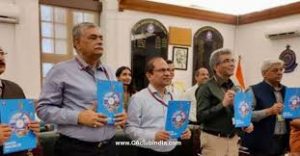
The Central Board of Indirect Taxes and Customs (CBIC) released the National Time Release Study (NTRS) 2024 report, which measures the cargo release time at 9 ports in India.
- The NTRS 2024 report aims to assess the progress made towards the National Trade Facilitation Action Plan (NTFAP) targets, identify the impact of various trade facilitation initiatives, and identify the challenges to a more expeditious reduction in release time.
- The NTFAP aims to transform the cross-border clearance ecosystem through efficient, transparent, risk-based, coordinated, digital, seamless and technology-driven procedures that state-of-the-art sea ports, airports and land borders support.
- NTRS 2024 is the fourth annual national-level study utilising standardised methodology to analyse customs clearance times for imports and exports from 1st January to 7th February 2024.
- The study highlights the efficiency of the CBIC Pre-payment Customs Compliance Verification initiative, which speeds up final clearance upon duty payment, often within 3 minutes.
- In the CBIC Pre-payment Customs Compliance Verification (PCCV) initiative, all the Customs formalities are completed and final clearance is pending only for payment of duties by the importer.
Lal Dora-Free Haryana:
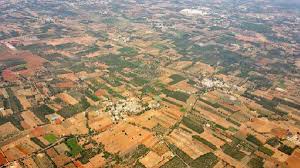
All villages of Haryana have been made Lal Dora-free. The state government launched a scheme to make villages “Lal Dora-free” on Good Governance Day on 25th December 2019.
- It is a reformative step towards the establishment of clear ownership of property in rural inhabited areas by mapping land parcels using drone technology and providing a ‘Record of Rights’ to village household owners with the issuance of legal ownership cards.
- Field verification of rural and residential areas was conducted in every village, and the mapping of every property falling under ‘Lal Dora’ was closely inspected.
- In some states, the inhabited areas of villages, known as “lal dora” land in Punjab and Haryana and “abadi” in some, were mostly excluded from such surveys.
- Many Indian village communities lacked documented land rights, relying instead on actual possession to claim ownership of land in residential areas.
- Rural property owners cannot use their properties as financial assets to obtain loans from banks without a legal document.
2024 UNAIDS Global AIDS Update:
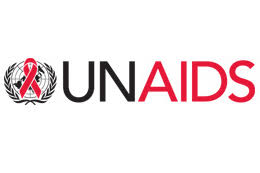
The 2024 UNAIDS Global AIDS Update, titled “The Urgency of Now: AIDS at a Crossroads”, presented a critical overview of the current state of the HIV/AIDS epidemic and the global response to it.
- The report underscores the potential to end AIDS as a public health threat by 2030, emphasising the necessity of addressing inequalities, increasing access to prevention and treatment, and ensuring sustainable resources.
- There has been a 39% reduction in new HIV infections globally since 2010, with sub-Saharan Africa achieving the steepest decline (56%).
- In 2023, fewer people acquired HIV than at any point since the late 1980s, and almost 31 million people were receiving antiretroviral therapy (ART).
- AIDS-related deaths have decreased to their lowest level since the peak in 2004, largely due to increased access to ART.
- While sub-Saharan Africa has seen significant progress, regions such as Eastern Europe, Central Asia, Latin America, and the Middle East and North Africa have experienced rising numbers of new HIV infections.
- For the first time, more new HIV infections occurred outside sub-Saharan Africa than within it.
- Key populations, including sex workers, men who have sex with men, people who inject drugs, transgender people, and people in prisons, continue to face high risks of HIV infection due to inadequate prevention programs and persistent stigma and discrimination.
- Community-led interventions are critical but often underfunded and unrecognized.
- HIV prevention efforts are falling short, with notable deficiencies in access to services like pre-exposure prophylaxis (PrEP) and harm reduction for people who inject drugs.
- About 9.3 million people living with HIV are not receiving ART, with children and adolescents particularly affected.
UNAIDS:
- UNAIDS is a model for United Nations reform and is the only cosponsored Joint Programme in the United Nations system.
Nipah Virus : 14-Year-Old Boy From Kerala Died

A 14-year-old boy from Kerala died after testing positive for the Nipah virus.
- Nipah virus (NiV) is a zoonotic virus (transmitted from animals to humans) and can also be transmitted through contaminated food or directly between people.
- The organism that causes Nipah Virus encephalitis is an RNA or Ribonucleic acid virus of the family Paramyxoviridae, genus Henipavirus, and is closely related to Hendra virus.
- NiV initially appeared in domestic pigs, dogs, cats, goats, horses, and sheep.
- It spreads through fruit bats (genus Pteropus).
- The virus is found in bat urine, faeces, saliva, and birthing fluids.
- The case fatality rate ranges from 40% to 75%.
- Symptoms: Causes encephalitic syndrome in humans, presenting with fever, headache, drowsiness, disorientation, mental confusion, coma, and potentially death.
- Diagnosis: Diagnosis can be established through real-time polymerase chain reaction (RT-PCR) from bodily fluids and antibody detection via enzyme-linked immunosorbent assay (ELISA).
- Prevention: No vaccines available for humans or animals.
- WHO has identified Nipah as a priority disease
NPS Vatsalya Scheme:
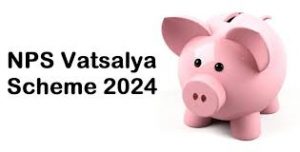
The finance minister recently made the announcement of a new pension scheme under the National Pension Scheme (NPS), called NPS Vatsalya.
- NPS Vatsalya Scheme is a scheme under the National Pension Scheme (NPS).
- It is designed to help parents and guardians plan for their children’s future financial needs.
- Under this scheme, parents or guardians can open an account for their minor children and make contributions towards their retirement savings.
- The funds will accumulate until the child turns 18.
- Once the child reaches adulthood, the accumulated amount will be transferred to the standard NPS account.
- This plan could be seamlessly converted into a non-NPS plan when the child becomes an adult.
- The scheme operates similarly to the existing NPS.




